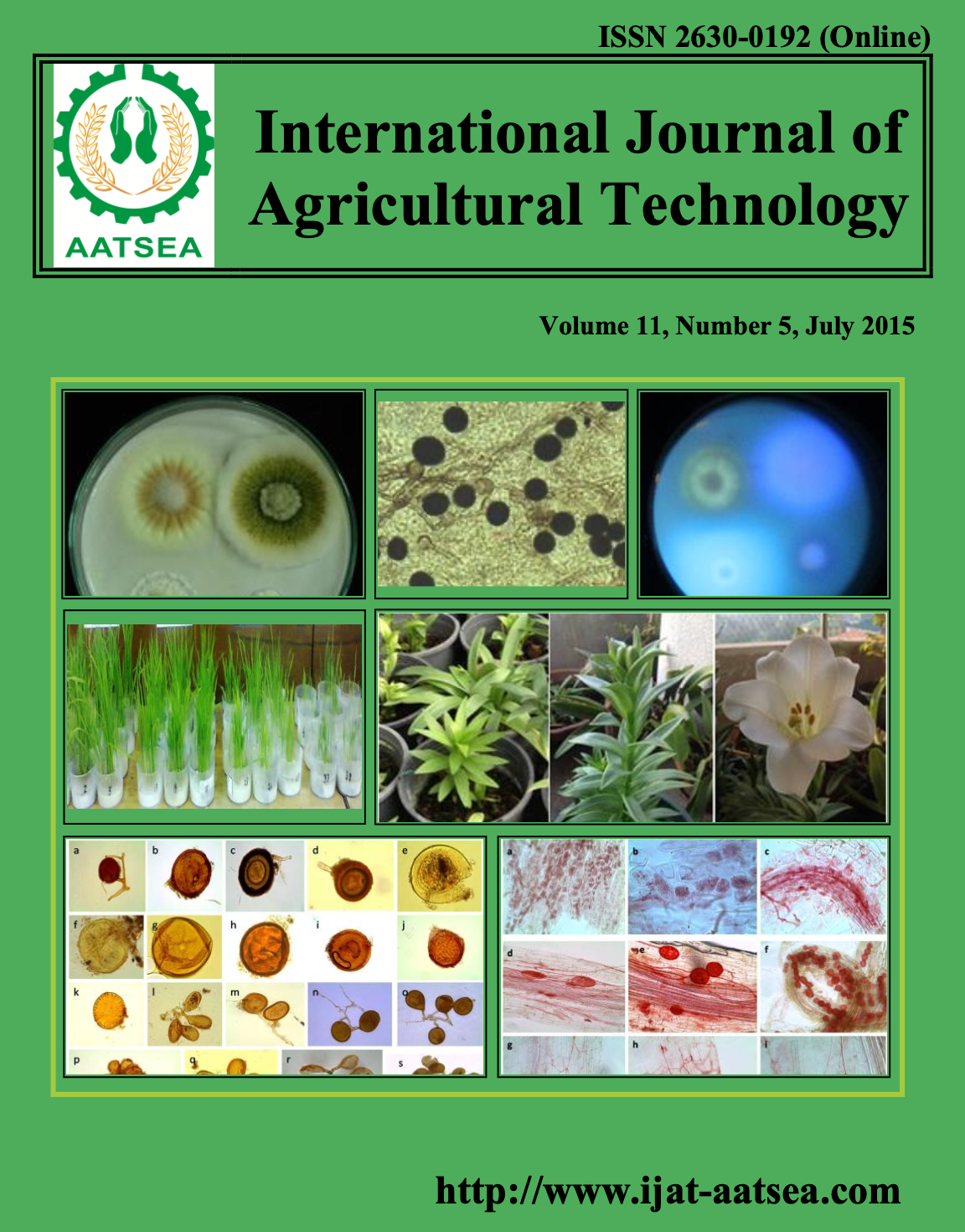Performance of the CSM-CERES-Rice model in evaluating growth and yield of rice in the farm level
Main Article Content
Abstract
Article Details

This work is licensed under a Creative Commons Attribution-NonCommercial-NoDerivatives 4.0 International License.
References
Aggarwal, P. K. and Mall, R. K. (2002). Climate change and rice yield in diverse agro-environments of India. II. Effect of uncertainties in scenarios and crop models on impact assessment. Climatic Change 52:331-343.
Ahmad, S., Ahmad, A., Soler, C. M. T., Ali, H., Zia-Ul-Haq, M., Anothai, A., Hussain, A., Hoogenboom, G. and Hasanuzzaman, M. (2012). Application of the CSM-CERES-Rice model for evaluation of plant density and nitrogen management of fine transplanted rice for an irrigated semiarid environment. Precision agriculture 13:200-218.
Ahmad, S., Ahmad, A., Ali, H., Hussain, A., Garcia y Garcia, A., Khan, M. A., Zia-Ul-Haq, M., Hasanuzzaman, M. and Hoogenboom, G. (2013). Application of the CSM-CERES-Rice model for evaluation of plant density and irrigation management of transplanted rice for an irrigated semiarid environment. Irrigation Science 31:491-506.
Bhatia, V. S., Piara Singh, S. P., Wani, P., Chauhum, S. G. S., Kesava Rao, A. V. R., Mishra, A. K. and Srinivas, K. (2008). Analysis of potential yields and yield gaps of rainfed soybean in India using CROPGRO-Soybean model. Agricultural and Forest Meteorology 148:1252-1265.
Buddhaboon, C., Jintrawet, A. and Hoogenboom, G. (2011). Effect of planting date and variety on flooded rice production in the deep water area in Thailand. Field Crops Research 124:270-277.
Cheyglinted, S., Ranamukhaarachchi, S. L. and Singh, G. (2002). Assesment of the CERES-Rice model for rice production of Thailand. The Journal of Agricultural Science 137:289-298.
Gomez, K. A., Hedt, R. W., Barker, R. and De Datta, S. K. (1979). A methodology for identifying constraints to high rice yields on farmer’s fields, In Farm-level constraints to high rice yields in asia: 1974-77. International Rice Research Institute, Philippines: Los Baños Laguna. pp. 27-47.
Hoogenboom, G., Jones, J. W., Wilkens, P. W., Porter, C. H., Boote, K. J., Hunt, L. A., Singh, U., Lizaso, J. L., White, J. W., Uryasev, O., Royce, F. S., Ogoshi, R., Gijsman, A. J. and Tsuji, G. Y. (2010). Deision support system for agrotechnology transfer version 4.5 [CD-ROM]. University of Hawaii, Honolulu, Hawaii.
Jamieson, P. D., Porter, J. R. and Wilson, D. R. (1991). A test of the computer simulation ARCWHEAT1 on wheat crops grown in New Zealand. Field Crops Research 27:337-350.
Jones, J. W., Hoogenboom, G., Porter, C. H., Boote, K. J., Batchelor, W. D., Hunt, L. A., Wilkens, P. W., Singh, U.,. Gijsman, A. J. and Ritchie, J. T. (2003). The DSSAT cropping system model. European Journal of Agronomy 18:235-265.
Kim, H., Ko, J., Kang, S. and Tenhunen, J. (2013). Impacts of climate change on paddy rice yield in a temperate climate. Global Change Biology 19:548-562.
Mishra, A., Singh, R., Raghuwanshi, N. S., Chatterjee, C. and Froebrich, J. (2013). Spatial variability of climate change impacts on yield of rice and wheat in the Indian Ganga Basin. Science of the Total Environment 486-469:S132-S138.
Phakamas, N., Jintrawet, A., Patanothai, A., Sringam, P. and Hoogenboom, G. (2013). Estimation of solar radiation based on air temperature and application with the DSSAT v4.5 peanut and rice simulation models in Thailand. Agricultural and Forest Meteorology 180:182-193.
Vilayvong, S., Banterng, P., Patanothai, A. and Pannangpetch, K. (2012). Evaluation of CSM-CERES-Rice in simulating the response of lowland rice cultivars to nitrogen application. Australian Journal of Crop Science 6:1534-1541.
Willmott, C. J. (1982). Some comments on the evaluation of model performance. Bulletin of the American Meteorological Society 63:1309-1313.
Witt, C., Pasuquin, J.M. and Sulewski, G. (2009). Predicting agronomic boundaries of future fertilizer needs in Agristats. Better Crops 93:16-17.


